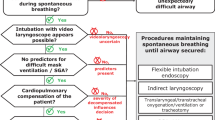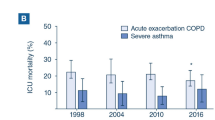Opinion statement
Obstructive sleep apnea (OSA) is a major public health problem in the US that afflicts at least 2% to 4% of middle-aged Americans and incurs an estimated annual cost of 3.4 billion dollars. At Stanford, we utilize a multispecialty team approach combining the expertise of sleep medicine specialists (adult and pediatric), maxillofacial and ear, nose, and throat surgeons, and orthodontists to determine the most appropriate therapy for complicated OSA patients. The major treatment modality for children with OSA is tonsillectomy and adenoidectomy with or without radiofrequency treatment of the nasal inferior turbinate. Children with craniofacial anomalies resulting in maxillary or mandibular insufficiency may benefit from palatal expansion or more invasive maxillary/mandibular surgery. Continuous positive airway pressure (PAP) therapy is used in children with OSA who are not surgical candidates or have failed surgery. As a last resort, tracheotomy may be used in patients with persistent or severe OSA who do not respond to other measures. The cornerstone of treatment in adults utilizes PAP: continuous PAP, bilevel PAP, or auto PAP. Treatment of nasal obstruction, appropriate titration, attention to mask-fit issues, desensitization for claustrophobia, use of heated humidification for nasal dryness and nasal pain with continuous PAP, patient education, regular follow-up, use of compliance software (in selected individuals), and referral to support groups (AWAKE) are measures that can improve patient compliance. Adjunctive treatment modalities include lifestyle/behavioral/pharmacologic measures. Oral appliances can be used in patients with symptomatic mild sleep apnea or upper airway resistance syndrome. Patients who are unwilling or unable to tolerate continuous PAP or who have obvious upper airway obstruction may benefit from surgery. Surgical success depends on appropriate patient selection, the procedure performed, and the experience of the surgeon. Phase I surgeries have a success rate of 50% to 60%, whereas phase II surgeries have a success rate greater than 90%.
Similar content being viewed by others
References and Recommended Reading
Dickens C: The Posthumous Papers of the Pickwick Club. London: Chapman and Hall; 1836.
Guilleminault C, Tilkian A, Dement WC: Sleep apnea syndromes. Ann Rev Med 1976, 27:465–484. Although from 1976, this is the seminal article describing sleep apnea.
Guilleminault C, Stoohs R, Clerk A, et al.: A cause of excessive daytime sleepiness: the upper airway resistance syndrome. Chest 1993, 104:781–787.
Loube D, Gay P, Strohl K, et al.: Indications for positive airway pressure treatment of adult obstructive sleep apnea patients. Chest 1999, 115:863–866.
Littner M, Hirshkowitz M, Davila D, et al.: Practice parameters for the use of auto-titrating continuous positive pressure devices for titrating pressures and treating adult patients with obstructive sleep apnea syndrome: an American Academy of Sleep Medicine Report. Sleep 2002, 25:143–147.
Berry R, Parish J, Hartse K: The use of auto-titrating continuous positive airway pressure for treatment of adult obstructive sleep apnea. Sleep 2002, 25:148–173. A thoughtful review that summarizes data on auto PAP usage.
Strobel R, Rosen R: Obesity and weight loss in obstructive sleep apnea: a critical review. Sleep 1996, 19:104–115.
Magalang U, Mador MJ: Behavioral and pharmacologic therapy of obstructive sleep apnea. Clin Chest Med 2003, 24:343–353. This is a comprehensive review of behavioral and pharmacologic modalities of treatment for OSA.
Rasheid S, Banasiak M, Gallagher SF, et al.: Gastric bypass is an effective treatment for obstructive sleep apnea in patients with clinically significant obesity. Obes Surg 2003, 13:58–61.
Dinges DF, Weaver TE: Effects of modafinil on sustained attention performance and quality of life in OSA patients with residual sleepiness while being treated with nCPAP. Sleep Med 2003, 4:393–402.
Lowe A, Schmidt-Nowara: Oral appliance therapy for snoring and sleep apnea. In Sleep Apnea: Pathogenesis, Diagnosis, and Treatment. Edited by Pack A. New York: Marcel Dekker, Inc; 2002:555–573.
Riley R, Powell N, Li K, Guilleminault C: Surgical therapy for obstructive sleep apnea-hypopnea syndrome. In Principles and Practice of Sleep Medicine, edn 3. Edited by Kryger M, Roth T, Dement W. Philadelphia: WB Saunders Company; 2000:913–928. This is a comprehensive review of surgical therapy for OSA.
Li KK: Surgical management of obstructive sleep apnea. Clin Chest Med 2003, 24:365–370.
Sher A, Goldberg A: Upper airway surgery for obstructive sleep apnea. In Sleep Apnea: Pathogenesis, Diagnosis, and Treatment. Edited by Pack A. New York: Marcel Dekker, Inc; 2002:575–605.
Hendler BH, Costello BJ, Silverstein K, et al.: A protocol of uvulopalatopharyngoplasty, mortised genioplasty and maxillo-mandibular advancement in patients with obstructive sleep apnea: an analysis of 40 cases. J Oral Maxillofac Surg 2001, 59:892–897.
American Sleep Disorders Association Standards of Practice Committee: Practice parameters for the treatment of obstructive sleep apnea in adults: the efficacy of surgical modifications of the upper airway. Sleep 1996, 19:152–155.
Miljeteig H, Tvinnereim M: Uvulopalatopharyngoglossoplasty (UPPGP) in the treatment of the obstructive sleep apnea syndrome. Acta Otolaryngol Suppl 1992, 492:86–89.
Guilleminault C, Li K, Khramtsov A, et al.: Sleepdisordered breathing: surgical outcomes in prepubertal children. Laryngoscope 2004, 114:132–137. A retrospective review of clinical presentation, results of clinical evaluation, polysomnographic data, treatment modalities, and outcomes in 400 children with sleep-disordered breathing.
Johnson LB, Elluru RG, Myer CM III: Complications of adenotonsillectomy. Laryngoscope 2002, 112:35–36.
Salonen A, Kokki H, Nuutinen J: Recovery after tonsillectomy in adults: a three-week follow-up study. Laryngoscope 2002, 112:94–98.
Nishino H, Kenmochi M, Kasugai S, et al.: Subcutaneous emphysema secondary to tonsillectomy: a case report. Auris Nasus Larynx 2003, 30(suppl):135–6.
Marioni G, De Filippis C, Tregnaghi A, et al.: Cervical emphysema and pneumomediastinum after tonsillectomy: it can happen. Otolaryngol Head Neck Surg 2003, 128:298–300.
Tomita H, Ohtuka K: Taste disturbance after tonsillectomy. Acta Otolaryngol Suppl 2002, 546:164–172.
Wilson K, Lakheeram I, Morielli A, et al.: Can assessment for obstructive sleep apnea help predict postadenotonsillectomy respiratory complications? Anesthesiology 2002, 96:313–322.
American Sleep Disorders Association Standards of Practice Committee: Practice parameters for the treatment of snoring and obstructive sleep apnea with oral appliances. Sleep 1995, 18:511–513.
Wang X, Wang XX, Liang C, et al.: Distraction osteogenesis in correction of micrognathia accompanying obstructive sleep apnea syndrome. Plast Reconstr Surg 2003, 112:1549–1547.
Loube DI: Technologic advances in the treatment of obstructive sleep apnea syndrome. Chest 1999, 116:1426–1433. This is a succinct review of therapy in OSA.
Schechter MS: Section on Pediatric Pulmonology, Subcommittee on Obstructive Sleep Apnea Syndrome Technical report: diagnosis and management of childhood obstructive sleep apnea syndrome. Pediatrics 2002, 109:69.
Friedman BC, Hendeles-Amitai A, Kozminsky E, et al.: Adenotonsillectomy improves neurocognitive function in children with obstructive sleep apnea syndrome. Sleep 2003, 26:999–1005.
Slovik Y, Tal A, Shapira Y, et al.: Complications of adenotonsillectomy in children with OSAS younger than 2 years of age. Int J Pediatr Otorhinolaryngol 2003, 67:847–851.
Author information
Authors and Affiliations
Rights and permissions
About this article
Cite this article
Guilleminault, C., Abad, V.C. Obstructive sleep apnea. Curr Treat Options Neurol 6, 309–317 (2004). https://doi.org/10.1007/s11940-004-0030-7
Issue Date:
DOI: https://doi.org/10.1007/s11940-004-0030-7




